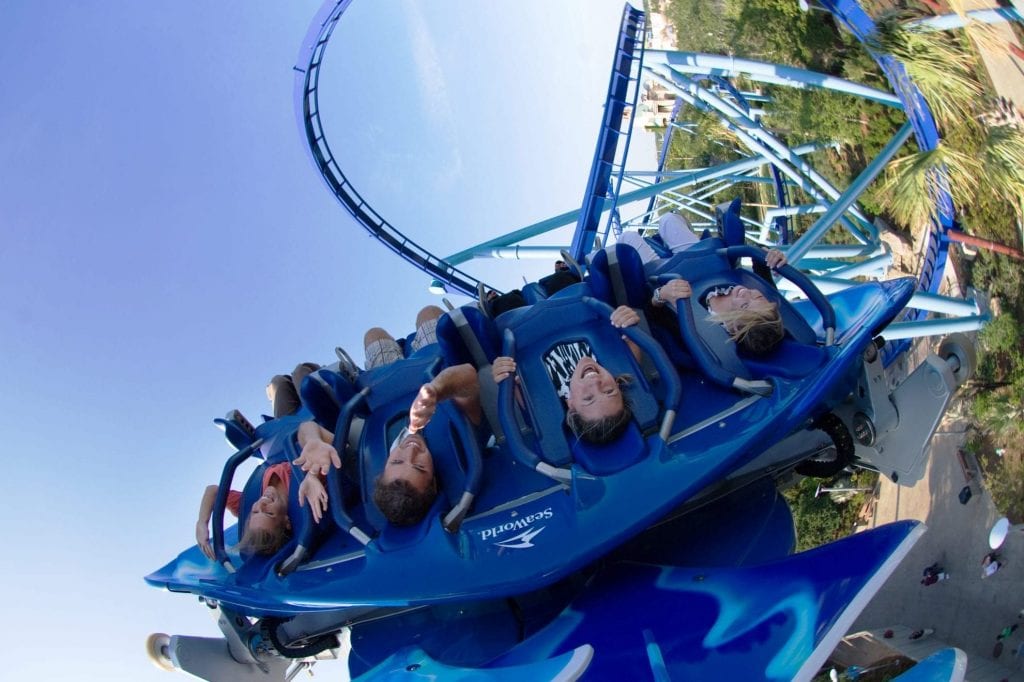Skift Take
SeaWorld is making theme park visitors an offer some apparently can't refuse: a good deal. With attendance continuing to rise and a slate of new attractions on the horizon, the operator might finally be leaving the bad times behind.
SeaWorld Entertainment is finding success with bargain hunters.
After years of consistently bad results, the theme park operator said Monday it has seen attendance and revenue climb for three quarters in a row.
One thing that isn’t increasing: ticket prices. And that is one key to SeaWorld’s recent overall improvement.
In a call with analysts Monday, interim CEO John Reilly referred to the company’s “strategic pricing initiatives” as one of the reasons behind the third quarter’s results, along with marketing efforts and the popularity of new rides, attractions, and events.
“We have continued to optimize and refine our pricing strategy over the course of this year to drive strong growth in total revenue,” Reilly said. “And we are encouraged by the combination of strong attendance growth and our growth in total revenue per capita.”
Attendance for the quarter that ended Sept. 30 increased nearly 10 percent to 8.3 million guests. Revenue was up a little more than 10 percent to more than $483 million. And net income jumped to $96 million, up from $55 million a year ago.
The company beat expectations for revenue but missed on profit. Shares closed at $25.16, down 4.3 percent.
While total revenue per person nudged up slightly to $60.74, per-person admission revenue dropped 3.4 percent to $35.35. In-park spending per person leapt almost 7 percent to $25.39.
“I think the tradeoff that we’ve seen this year is one that investors will take any day of the week, a decline in admission per cap but real nice growth on the attendance line and even in-park line,” James Hardiman, a Wedbush analyst, said during the call. “Talk about how much of that was a calculated tradeoff, what you saw heading into this year that made you think that that was a tradeoff that you could successfully pull off. How much of that should we expect to continue?”
Reilly said the pricing strategy has been a “test and learn environment” meant to maximize total revenue.
“We’re learning every day as we continue to refine and optimize toward our pricing initiatives, and you should expect that we will continue to pursue pricing strategies going forward that maximize total revenue generation and we’ll be optimizing the tradeoff between price and attendance,” he said.
But, Reilly said, he believes the company can also increase per-person admission moving forward.
While SeaWorld didn’t meet Wall Street expectations on every front, the company’s performance so far this year has been a marked improvement from the last few years. Attendance grew nearly nine percent to 18 million year-to-date, while revenue increased 9.5 percent to $1.09 billion and net income jumped to nearly $56 million compared to a net loss of nearly $182 million for the first nine months of 2017.
The company, with a portfolio that includes SeaWorld, Busch Gardens, and Sesame Place parks, has struggled to recover after the 2013 release of the critical documentary Blackfish. New management came in following the backlash — which centered around the company’s treatment of captive orcas — and announced plans to stop the breeding program and transition its killer whale shows into more natural exhibitions.
Former CEO Joel Manby and several of his top executives left earlier this year after their efforts to turn the company around failed to gain traction. Reilly, a longtime insider, said Monday that a board search for a permanent CEO was still underway.
In September, the company and former CEO Joel Atchison agreed to settle fraud charges with the Securities and Exchange Commission over commentary made after the documentary was released. SeaWorld agreed to pay $4 million, while Atchison settled for $1 million.
Reilly said during the earnings call that the company still plans to change its orca shows in SeaWorld parks in Texas and Florida at some point over the next year. But, he said, executives have taken some lessons from moving away from theatrical performances in California.
“For example, we will not be closing the show as we make the transition,” Reilly said. “The amazing animals will be available for the public to view as we make the transition.”
Another recent (and obvious) lesson: Free beer is popular. Reilly highlighted a promotion offering free brews at SeaWorld Orlando and Busch Gardens in Tampa Bay over the summer as a crowd-pleaser.
“We’ve committed to bring that promotion back to both parks with an expanded calendar in 2019,” he said. “In fact, our free beer promotion will be available year-round at Busch Gardens Tampa Bay starting in January as a part of their 60th anniversary celebration.”
The Daily Newsletter
Our daily coverage of the global travel industry. Written by editors and analysts from across Skift’s brands.
Have a confidential tip for Skift? Get in touch
Tags: earnings, seaworld, theme parks
Photo credit: The Manta roller coaster is shown at SeaWorld Orlando in this promotional photo. SeaWorld reported higher attendance and revenue for the third quarter of 2018. Jason Collier / SeaWorld Orlando
